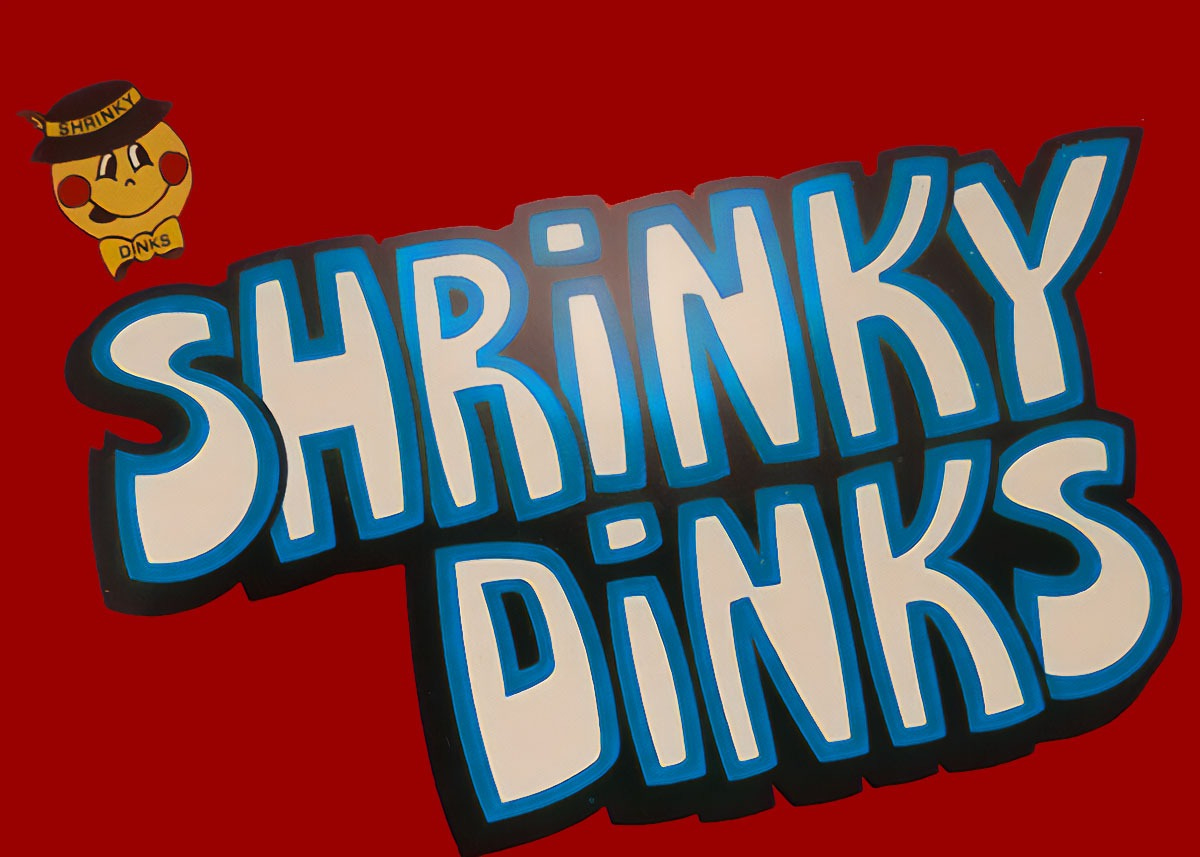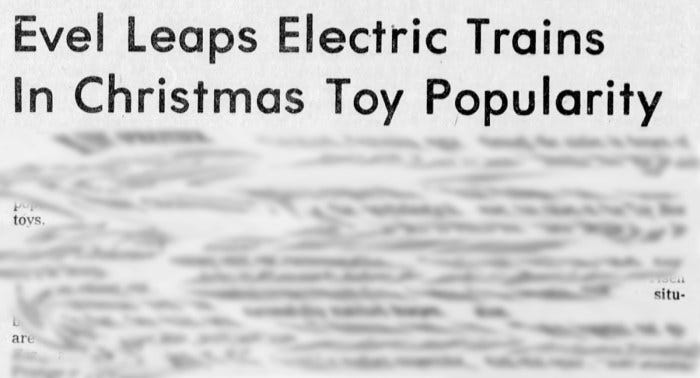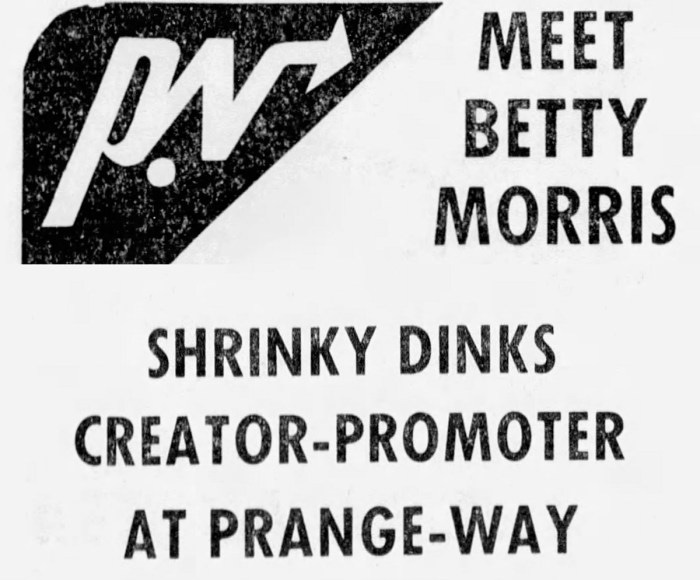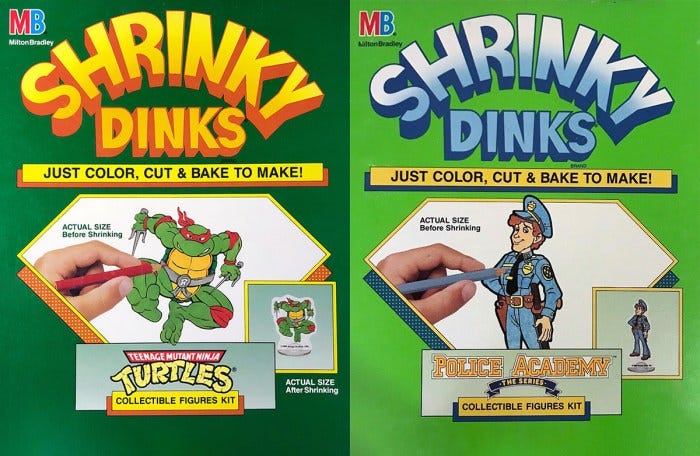The Magical World of Shrinky Dinks
If you can trace and color and cut, you’ve got what it takes. Then a little bit of baking makes it shrink like magic right before your eyes.
In these modern times, we are surrounded by plastic. It permeates almost everything we do and is so pervasive we are fearful at how saturated our environment has become with the stuff.
So common is plastic, that when we are not decrying its use, we take it for granted. Yet, when you think about it, the stuff is pretty amazing. It can be strong or brittle, rigid or flexible, opaque or transparent. Plastic does it all. Sadly though, as some things become common, we often take them for granted.
But a toy invented in the 70s that is still available today, is not only still fun to play with, but also captures and demonstrates some of the near-magical qualities of plastic, The Shrinky Dink.
The Birth of Shrinky Dinks
Shrinky Dinks got their start in Brookfield, WI, way back in the early Seventies. It was there that Betty Morris and Kathryn Bloomberg invented the amazing shrinking craft while working on a Cub Scout project with their sons.
They had read about a fun project in a magazine where you could trace, cut, and color onto plastic lids, place them in the oven and watch as they shrunk and hardened. The kids loved it, and it was a bolt of lightning moment for the pair. They would quickly turn their attention to how they could make this into a more easily played with craft kit that would sell.
Naturally, they started out small. But there was a problem, they couldn’t get their hands on the plastic they needed. After calling around to manufacturers, it became obvious decided that while Shrinky Dinks was a great name for their product, their company needed a name that would be taken seriously. So they adopted the moniker, K&B Innovations. Soon thereafter, they were to find a supplier.
Even after getting the plastic they needed, they still needed to get the business running. So to save money, their homes were taken over by the business and became their manufacturing, research, and shipping locations. This was pre-internet, so they needed to find a location that would sell Shrinky Dinks.
After being turned down repeatedly, they eventually found a place that would allow them to demonstrate and sell their kits, a mall called, Brookfield Square.
On October 22, 1973, Morris and Bloomberg arrived at the Brookfield Square, fired up the toaster oven, and began to show the world the power of the Shrinky Dink.
It was a massive success. So much so that friends and family members were recruited to keep up with demand, and in the first ten days they had sold 3,000 kits.
Naturally they were invited back to the mall for the Christmas season and the success of the product continued. Over the next few months they would sell 25,000 kits at $2 per kit. Word of mouth was good, and the product was finding its way into a few dozen retails stores.
At this point, they were contacted by the toy distributor M.W. Kasch. A deal was made where M.W. Kasch would financially back K&B Innovations and their subsidiary, Skyline, would help with sales.
This injection of money and know-how added a new shine of professionalism. New vendors and people were brought in to manufacture, design, and market the increasingly popular product. Shrinky Dinks even started showing up in print and television advertising.
1973 was an amazing year for Morris and Bloomberg. They had a bona fide hit toy on their hands, and 1974 would be the year when Shrinky Dinks would break big.
The Big Toy of Christmas, 1974
In 1974, Shrinky Dinks now had the financial backing of an established toy distributor and a national sales staff. Much of the advertising and promotion of the product during the first year focused on Shrinky Dinks as a “craft,” but that was about to change. The stage was set for them to make a major splash during Christmas of that year, and they did, not just as a craft, but also as a major toy.
Articles in newspapers across the United States painted the Shrinky Dink as the hot toy to get. What other toys were they up against? Here is what was being touted by the press:
Evel Knievel Toys
The Sunshine Family
Holly Hobby
Perfection
Toss Across
Barbie
Spyder Bikes
Tonka Trucks
Not all of these toys were brand new, but they were being discussed in the media and were certainly on a lot of kids’ Christmas lists.
Evel Knievel mania was strong that year. I read some interviews with toy store owners at the time who claimed they couldn’t keep anything Evel in stock, he was so popular.
It appears that Shrinky Dinks popularity was a surprise to many retailers. In fact, the 1974 Sears Wishbook, doesn’t have a listing for Shrinky Dinks. They do have good coverage of Evel Knievel, though. Which makes one wonder, would Shrinky Dinks have been an even bigger hit had stores had any idea of its potential popularity?
Browsing through more Sears Catalogs, I was surprised to see that their first mention of Shrinky Dinks wasn’t until 1976!
Demonstrations and Appearances
A key component of the original sales of Shrinky Dinks was the demonstration. Morris, Bloomberg or one of their recruits would actually color, cut and shrink dinks in front of a live audience. In 1974, while the toy was still catching on, the demonstrations continued at malls and stores across the country.
Here is an ad from 1974 for the store Britts that touts an upcoming demonstration of “Shrink Art” or “Shrinky Dinks.” This ad is from the summer and still leans heavily into them as “crafts.”
Meanwhile, Morris and Bloomberg were making appearances to promote the product, but things had changed for them. During the first year, they were demonstrating how the product worked, but now their personal story had gotten out and people wanted to hear the story of these entrepreneurs first-hand.
The Business Model
If you are browsing older Shrinky Dinks online or in your toy closet, you might notice different names on the box. This is because over the years, they would be distributed by various companies.
The setup started when their distributor M.W Kasch had some difficulties and K&B Innovations needed to figure out a new way to get their product to market. So they started signing licensing agreements with other companies.
In these agreements, they would retain the rights to Shrinky Dinks, but allow other companies to use the brand on products they would sell in return for a licensing fee.
The first company to make Shrinky Dinks under an exclusive licensing agreement was Colorforms. It was an amazing partnership. Colorforms had existing agreements to feature original Intellectual Properties (IP) on their own popular kits. So it wasn’t a huge leap to take that same IP and distribute it as Shrinky Dinks.
Shrinky Dinks under Colorforms became so popular that the toy giant Milton Bradley would purchase the rights from Colorforms in the late eighties, so that they could make and distribute them.
Milton Bradley would re-issue a lot of the Colorforms Shrinky Dinks, but would also enter into agreements that would see characters from the Police Academy Animated Series, Teenage Mutant Ninja Turtles, and others make the jump to tiny shrunken plastic form.
How Shrinky Dinks work
Shrinky Dinks are made of polystyrene. If you have some plastic lying around, you might find similar stuff in the clear clamshell to-go food containers. If you look at the bottom, you will likely see it labeled as recycled plastic #6.
So, it is a pretty common plastic and if you can find the right type, you could turn those containers into shrinking works of art. Although, it is much cleaner and easier to just buy sheets online.
Polystyrene, like other plastics, is made of polymer chains. Picture those chains as repeating links of the material that make up the plastics. Now those chains are usually all bunched together and random, but through a heating and rolling process they straighten them out. The thing is, those polymers want to get all disorderly again. Adding heat, by putting Shrinky Dinks in an oven, lets them do their thing and go all wobbly. Keep the heat going and before you know it, big magically becomes little.
How a plastic will shrink properly and not get all bent out of shape is due to how it’s produced. When they are rolled out and stretched during the manufacturing process, a Shrinky Dinky’s plastic is stretched in two directions, which makes them Biaxial oriented. In addition to making the plastic strong and flexible, this process also ensures that it will shrink evenly. That is why whatever adorable cartoons character Shrinky Dink you shrink, retains its appearance and doesn’t result in a melted, misshapen nightmare.
Trademark Language
When I start reading about a toy or product, I like to check out the filing of patents and trademarks to see how they were initially described. Often the language feels too broad or vague, but not with Shrinky Dinks. Their Trademark, which was filed in 1974, does a great job of actually defining what the product is:
Yup, that’s Shrinky Dinks alright.
What was the Best Selling Shrinky Dink Set?
Shrinky Dink peaked in popularity in the early Eighties. According to Morris, this is when they also sold their most popular kit of all-time, the Smurf Collector Set of 1981/1982.
It was the perfect timing and tie-in. Smurfs were hitting big, and the public had nearly a decade of experience with Shrinky Dinks. So when kids were asking for Smurf toys, this was a great fit.
Simple to color, primarily blue, when they shrunk down (like Smurfs should do) the result was a rich blue Smurf. Since each kit also came with stands for your creations, you could go beyond displaying, and actually use them as toys.
This kit, by Colorforms, included 10 smurfs, 3 colored pencils (blue, red, and white), an instruction booklet, and 10 snap-on-bases.
They would follow up with a second kit the next year, and this one built on the play aspect by including a cardboard mushroom house which you could fill with your shrunken Smurfs.
Collecting Old Shrinky Dink Kits
As you might guess, Shrinky Dinks have become quite collectible over the years. Especially the ones from the early 1980s. If you shop around, you might be able to find unused kits, but it’s getting more challenging.
I have managed to snag a few, but my dream of re-collecting all the kits I had as a kid, is getting more difficult. Still, I have my Wishlist of memorable kits. Some I have acquired, others I am still trying to get.
They include:
E.T. the Extra-Terrestrial
He-Man and the Masters of the Universe
Mr. T
Q*bert
ALF
Marvel Super Heroes
GI-Joe
Pac-Man
Robot Man
The Muppets
The Real Ghostbusters
Lovable Monsters
SilverHawks
Shrinky Dinks were also licensed to stores and brands as premium giveaways. I have only seen a few online, but if you are lucky you might be able to dig up a Shrinky Dink cereal premium or fast food giveaway. My favorites are 7-11 Monster Shrinky Dinks Dink, the Carl’s Jr. Happy Star mascot, and when Malted Shreddies Cereal did a premium featuring Shrinky Dinks from the movie, The Black Hole.
When you pick up these old kits, you will probably be anxious about using them. Luckily, technology has you covered.
If you have a scanner and printer, you can scan the original set and then print it out on blank sheets you can buy online or at your local craft store. Then feel free to make an army of shrunken Smurfs, content with the knowledge that your original set will remain unused.
The Decline and Rebirth of Shrinky Dinks
In the 1980s, Bloomberg left the company to pursue a career in local politics. Morris would buy her shares of the company and become the owner of K&B Innovations. Unfortunately, the timing for Morris wasn’t great.
Milton Bradly bought Parker Bros. in the nineties and shifted away from toys to focus on games. This meant the end of their Shrinky Dink products, which was the main line of income for K&B Innovations. They would make a deal with Western Publishing’s Golden Books division, but that company also went out of business. It was time for a change.
In the late nineties, Morris abandoned exclusive licensing and reorganized the company to grant non-exclusive licenses to multiple companies. Anyone who wanted to make Shrinky Dinks, needed not just the license. They also had to buy the plastic sheets from K&B Innovations.
This turned into a great decision. New companies and brands stepped up to fill the void, and these branded products began showing up in stores. Even home shopping channels like QVC started selling them. At the same time, K&B began making their own craft kits, which they sold both online and at hobby and craft retailers.
The changes worked, and the company began to grow again. Eventually, Alex Brands would purchase the brand in 2014. Then in 2020, Fun Again, acquired Shrinky Dinks, and they are still making them today.
If you can think it, you can shrink it!
One of the cooler toys to come out of the modern era of Shrinky Dinks was the Incredible Shrinky Dinks Maker. Powered by a lightbulb, like an Easy-Bake Oven, the Shrinky Dinks Maker allowed kids to engage in the shrinking process without using an oven.
They started making the ovens back in 2001 and over the years they would tweak the design, one thing they didn’t change was the purple color.
I watched a few videos of them in action. I am surprised at how well they worked. One should never underestimate the heat a 60W incandescent bulb can generate.
Shrinky Dink Advertising
Over the years, they would make a bunch of great commercials for Shrinky Dinks. If you watched Saturday Morning Cartoons in the 1970s and 1980s, odds are you saw a commercial for the amazing shrinking toy. From the 1970s, all the way up through popular branded sets of the 1980s, you could always count on catching a Shrinky Dinks commercial on television.
One that has always stuck with me, was this one by Colorforms with a VERY catchy jingle.
I could sing along to that as a kid and would often sing it at random times. As if proving my dedication to the brand would somehow make more of the kits appear. Sadly, it didn’t work out that way, but here are the lyrics if you are interested in singing them yourself. Maybe you will have better luck.
Where does bigger get littler?
Taller get smaller?
As you make your favorite things, hour after hour.
Where else, but in the magical world of Shrinky Dinks?
If you can trace and color and cut, you’ve got what it takes.
Then a little bit of baking
makes it shrink like magic right before your eyes.
Wow!
Bigger gets littler.
Taller gets smaller.
As you make your favorite things, hour after hour.
Welcome to the magical world of Shrinky Dinks.
Making your own Shrinky Dinks
While you can buy pre-made Shrinky Dinks nowadays, you also have more plastic shrinking crafting options. If you do a quick search online, you will find hundreds of results from people demonstrating how to make your own shrinking plastic handicrafts.
The plastic to do so has been readily available for decades, but what has made things more exciting, especially for the artistically disinclined, such as myself, is the availability of home printers. This is not a new development, ads touting the connection to printers were showing up in the early 2000s as part of Morris’ revitalization of the brand.
If you pick up the right plastic sheets and have a home printer, you can select any art you want, print it onto the sheets and color and cut, just like you would with Shrinky Dinks.
It is a lot of fun to do, especially since it lets you pick whatever art you might find. You kids love some obscure character that would never find its way to a boxed kit? No problem, just find a decent line drawing, print it out and let your kids enjoy the process of making beautiful shrunken art pieces.
If you are shopping online for plastic sheets without the Shrinky Dink branding, just make sure you find ones that are “pre-sanded.” This plastic, to hold color, needs a rough texture. Some people are selling sheets that are completely smooth. With those, you will need to sand the sheets before using them. So be aware and read other people’s reviews before purchasing anything.
Shrinky Dinks and the Future
Shrinky Dinks as a toy, do not seem to be going anywhere, but if we had any doubt about it viability as a future toy, we might just need to look beyond the toy chest. Shrinky Dinks are inspiring people in art and science.
Artists have been rediscovering the medium. Not just using it to for durable beautiful jewelry, but also creating delicate works of art inspired by nature, that is shrunk down to perfect size. Just like the artist had done as a kid with pre-made kits.
Scientists are realizing that the ability to shrink plastic can be used as a fast track to miniaturization. With researchers and engineers applying the process in the creation of medical diagnostic components, building self-folding structures, and as a medium in the field of nanotechnology.
Unseen scientific and creative applications for the technology seem to be just around the bend, just waiting to be discovered by smart and artistic people who grew up playing with Shrinky Dinks.
This development alone should be a reason for every kid to have access to a Shrinky Dink set.
Legacy
Shrinky Dinks are a legendary toy invented by two people who saw the magic in what could have been a simple craft project. Over the years they evolved. Starting from their humble DIY beginnings, they rode the massive toy branding wave of the eighties and while they dipped in popularity, they managed to stay alive. Much to the delight of children and adults who play with them even today.
While high-tech toys dominate modern markets and will continue to do so for a long time, I would bet that decades from now, people will still be coloring, cutting, baking pieces of plastic, and marveling at their results.
The Retroist Shrinky Dinks Podcast
If you prefer your information about Shrinky Dinks in audio form, you should check out the brand new Retroist Shrinky Dinks Podcast.










Dude, this is an amazing article! I love the history and depth you put into it. I totally forgot about the Smurf Shrinky Dink set I had as a kid until I saw your picture! There was a time in elementary school that our teachers would have us create our own artwork with generic Shrinky Dink plastic. I created a very ugly (but geometrically cool!) Christmas tree ornament design that has been bequeathed to my brother and nephews which still holds a very prominent spot every year on their tree (probably to get a reaction out of my mom, who hated that thing!) Thanks for all your research on this article!
Love this! It brings back so many great memories of the those toys.